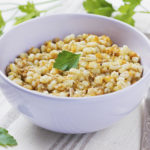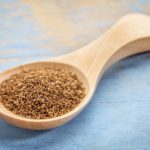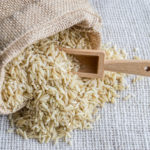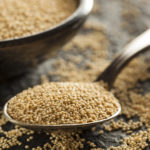Cooking With Grains: Buckwheat
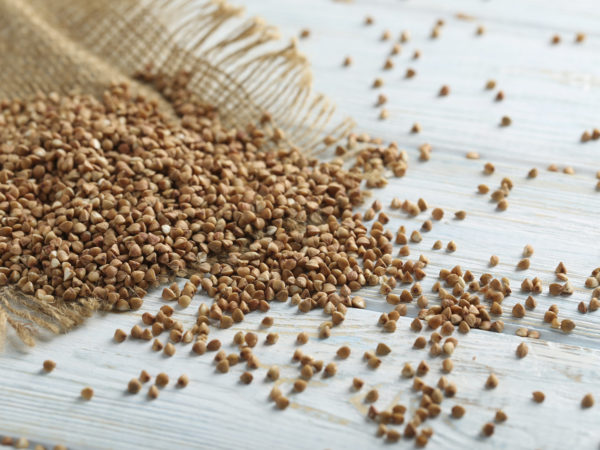
If your heritage is Russian, you may have grown up on kasha varnishkes, a traditional dish of buckwheat groats, bowtie pasta, onions and mushrooms. If not, there’s still no excuse not to enjoy this hearty grain, which, in addition to complementing savory foods, also makes a delicious breakfast porridge when combined with milk or soymilk, fruit and a little sweetener.
Buckwheat – known as kasha once it’s toasted – is too rarely consumed in its whole-grain form. Buckwheat flour-based pancakes and soba noodles are popular and delicious, but with their higher glycemic load, are less healthful than dishes made from the intact kernels, or groats. Buckwheat is high in rutin, a flavonoid that protects against disease by strengthening capillaries and preventing blood clotting. Coupled with its high levels of magnesium (one cup cooked provides over 20 percent of the Daily Value), which lowers blood pressure, buckwheat is truly a heart-healthy food. Buckwheat is completely gluten-free and suitable for those with celiac disease. Although you can store buckwheat in a cool, dry place for a short amount of time, it is best to keep it in the refrigerator, where it will last up to three months, or in the freezer, for six months.
Cooking time: Untoasted buckwheat, 20-30 minutes; kasha, 15-20 minutes
Liquid per cup of grain: 2 cups
How to cook kasha or buckwheat: For raw buckwheat groats, toasting is highly recommended to lend a pleasant, nutty taste. (You can also buy your buckwheat groats pre-toasted, in which case they will be labeled “kasha.”) To toast: place groats in dry pan over medium heat, stirring for five minutes, until browned. Whether you’re preparing kasha or untoasted buckwheat groats, place in a pot with water and bring to a boil. Reduce heat to low, and simmer until tender. Kasha requires significantly less cooking time than untoasted buckwheat; adjust accordingly.
Try this recipe with buckwheat or kasha: Kasha With Vegetables


